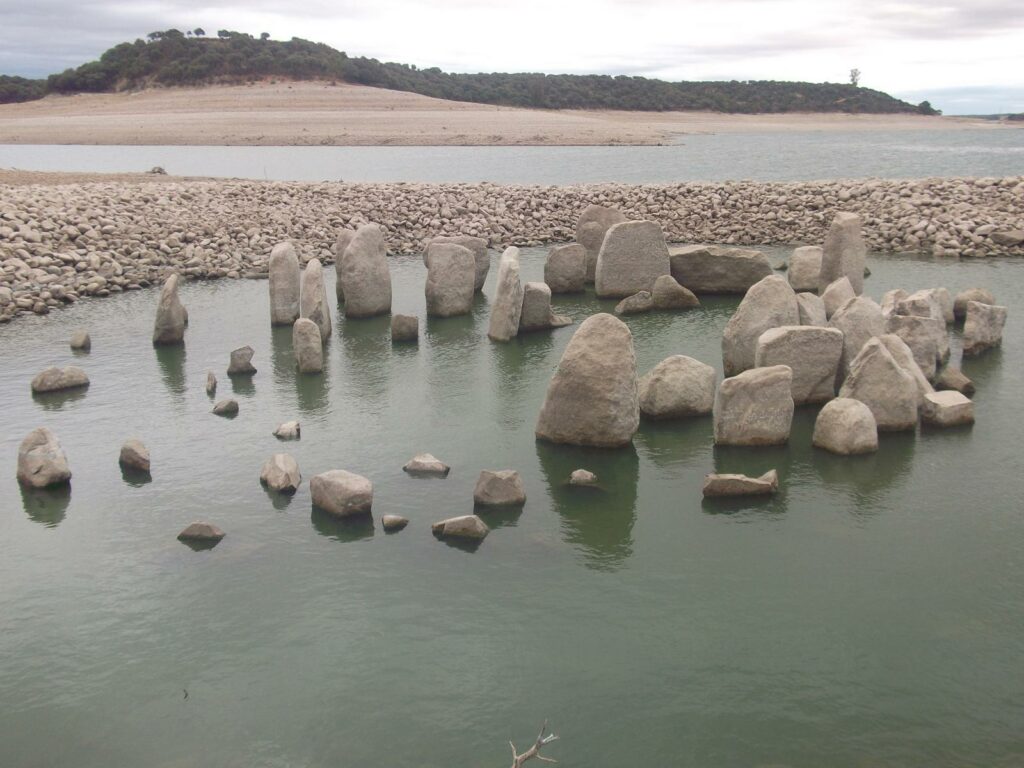
The "Spanish Stonehenge" dates from 5000 BC. he emerged from a dam during the drought
The “Spanish Stonehenge” dates from 5000 BC. he emerged from a dam during the drought
A brutal summer has taken its toll on many people in rural Spain. An unexpected side effect of the country’s worst drought in decades has thrilled archaeologists with the emergence of a prehistoric stone circle in a dam whose water line has receded. Officially known as the Dolmen of Guadalperal but dubbed the Spanish Stonehenge, the circle of dozens of megalithic stones is believed to date back to 5,000 BC.
Where is the ‘Spanish Stonehenge’ located?
It is currently fully exposed in a corner of the Valdecanas reservoir in the central province of Caceres, where the administration says the water level has dropped to 28% of its capacity.
“It’s a surprise, it’s a rare convenience to access it,” says archaeologist Enrique Cedillo of Madrid’s Complutense University, one of the experts rushing to study the circle before it’s gone. submerged again.
It was caught by German archaeologist Hugo Obermaier in 1926, but the area was flooded in 1963 in a rural development project under the dictatorship of Francisco Franco.
What’s the history of the Spanish Stonehenge?
Dolmens are vertically arranged stones that usually support flat rock. Although there are many scattered throughout Western Europe, little is known about who erected them.
Human remains found in or near many have led to an oft-cited theory that they are graves.
Local historical and tourist associations supported moving the stones from Guadalperal to a museum or elsewhere on the mainland.
The emergence of stones is positive for tourism but negative for agriculture
Their presence is also good news for Ruben Argentas, owner of a small boat tour company. “The dolmens are emerging and the dolmen tourism is beginning,” he says after a busy day of tourist trips to the site and back.
But there is no silver lining for provincial farmers.
“There hasn’t been enough rain since spring… There is no water for the cattle and we have to transport them inside,” explains Jose Manuel Comendador. Another, Rufino Guinea, says his sweet pepper crop has been devastated.
Climate change has left the Iberian Peninsula at its driest point in 1,200 years and winter rains are expected to decrease further, according to a study published in the journal Nature Geoscience.
Prasannkumar is a passionate digital marketer and devoted team leader. He loves trying out and sharing the latest knowledge about industry trends, market growth, and keyword analysis with new google and other search engines algorithm. He effectively knows how content feeds into different subsets of the marketing plan and grasps how to develop and share the content assets on the right channels.



